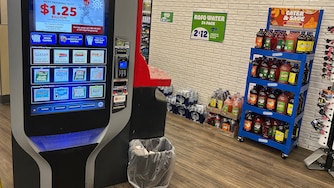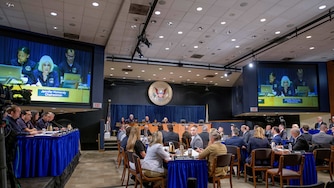New requirements imposed by Maryland regulators to protect South Baltimore residents from an export terminal’s coal dust have left both environmentalists and the facility operator unhappy.
Both CSX, the railroad company that operates the coal piers in Curtis Bay, and neighborhood advocates have filed challenges contesting the facility’s new permit, which requires operators to build a giant windscreen to keep coal dust from blowing off its premises.
The Maryland Department of the Environment has said its permit for the Curtis Bay Coal Piers, which it issued in late July after much delay, is among the most stringent air pollution permits in state history. The agency stood by its permit in a statement Monday.
“We followed the science and the law to establish requirements that address pollution from the facility and are within our legal authority to act,” MDE spokesman Jay Apperson said.
But advocates who worked with the MDE for months to examine coal dust in the neighborhood blasted the windscreen requirement as too soft. The South Baltimore Community Land Trust, a neighborhood advocacy group, has called on the MDE to shut the piers down — a step regulators insist is beyond their powers — or at least force CSX to cover its entire facility, as is the standard at some coal storage sites elsewhere.
CSX, meanwhile, has long signaled its intent to fight new requirements.
The MDE delayed the operating permit, initially due to come out in September 2023, in part to account for a community-led study into the extent of coal dust pollution in Curtis Bay. CSX issued a lengthy rebuttal to that report and argued that any regulatory decision based on it would violate Maryland law.
The railroad filed its appeal request with the MDE two weeks after the permit’s release. The state Office of Administrative Hearings is expected to take up the appeal in the coming months.
In a 20-page filing, attorneys for the Jacksonville, Florida-based company argue that the MDE relied on flawed studies into the pervasiveness of coal dust pollution in Curtis Bay, a blue-collar neighborhood surrounded by other industrial sites.
At the same time, CSX argues that regulators considered its facility’s impacts through an environmental justice lens — emphasizing the burden of pollution on low-income, often minority communities — even though environmental justice “is not a relevant factor” for renewing permits of this kind.
The windscreen requirement is so burdensome that it would interfere with CSX’s transportation mandates under federal interstate commerce laws, the company argues.
An attorney for the South Baltimore Community Land Trust, meanwhile, went to the courts with its challenge, filing a request for judicial review in Baltimore City Circuit Court.
The group’s petition cites the permit’s negative impacts for the “quality of life, health and housing” of community members near the CSX terminal, but it doesn’t elaborate on specific arguments against the MDE decision.
Carlos Sanchez, an organizer with the group and co-author of a recent Johns Hopkins University paper detailing the extent of coal dust pollution from the CSX site, criticized the MDE in July for failing to set specific limits on how much dust can enter the community. He pointed to findings in his recent Hopkins paper that he said show windscreens and water sprayers fail to adequately contain coal dust.
The CSX terminal and a separate coal pier across the Patapsco River near Canton combine to make Baltimore the country’s second-largest exporter of coal. In recent years, exports of coal through Baltimore have boomed, with most of it traveling overseas to India.
This new license is the first for the CSX coal piers since an explosion there rocked Curtis Bay neighborhood in late 2021, blanketing much of the area with dust.
Under the permit, CSX has 120 days to submit construction plans and 18 months after that to erect a windscreen, but the MDE said those timelines will pause until the appeal is resolved.





Comments
Welcome to The Banner's subscriber-only commenting community. Please review our community guidelines.